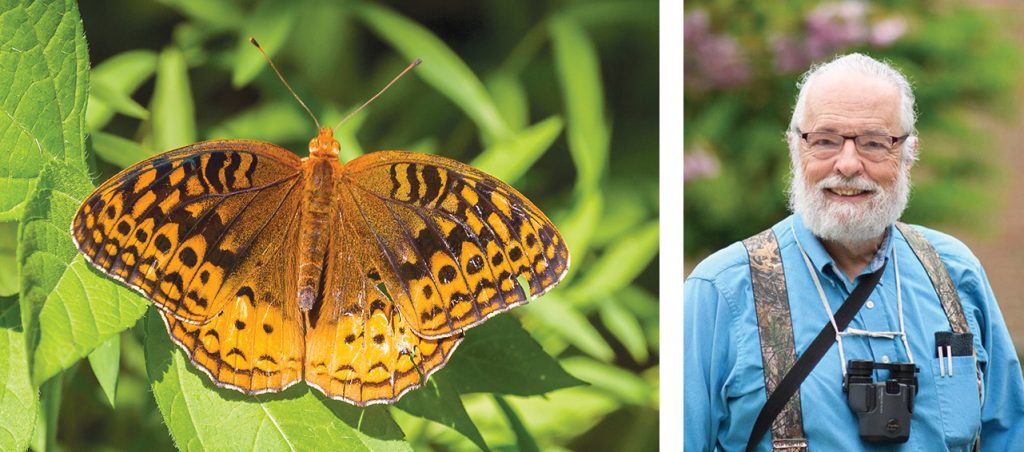Hatch Hill: A Lasting Conservation Legacy
Elizabeth Horn fondly recalls summers spent at her family land nestled in the rolling hills of Whitehall, New York. Exploring the property’s forests, cliffs, and wetlands, hiking up to the top of Hatch Hill, watching the sun set behind the low mountains rising above Lake Champlain’s South Bay—these pastimes filled many carefree days.
But the Horn family’s rustic off-the-grid camp was much more than a summer retreat. It also served as a summer research station. Elizabeth and her husband Henry both worked in the Biology Department at Princeton University. Henry, an ardent naturalist and ecology professor, studied the behavior of local butterfly populations and wrote scientific papers in the shadow of Hatch Hill.
The Horns always knew their land—with its unique woodlands, diverse array of natural communities, numerous wetlands, and the scenic forested summit of Hatch Hill—was special.
Now, after over 50 years of responsible stewardship, Elizabeth and her children are honoring Henry’s love of the natural world and his important contributions to the fields of ecology and plant biology by conserving their land with the Lake Champlain Land Trust.

Learning from the Land
Two young children with butterfly nets in hand bound through a small meadow. It’s the Summer of 1982, and the Horn children are helping their father with his research. Summer field season at the Horn’s primitive camp, which has long been absorbed by the forest, was a family affair with everyone pitching in to help Henry capture, mark, and release his winged subjects.
Before turning his attention to butterflies, Henry saw his family’s Whitehall land, with its mix of young forests and mature woodlands as a prime site for forest research. Henry’s well-known research focused on the growth and shape of trees and how forests change over time. Henry was also the founding director of Princeton’s Environmental Studies Program.
Thanks to the Horn Family’s generous donation of a conservation easement to the Lake Champlain Land Trust, the special land that inspired Henry is now permanently protected—for wildlife, water quality, scenic beauty, and future scientific study. As with most private forest conservation projects, there is no public access.

Saving Rare and Unique Natural Communities
In addition to mature hardwood forests and important wetlands, the Hatch Hill property includes a rare, state-ranked Talus Slope Woodland with boulder-filled glades supporting a diverse array of fern species. The property is also home to an Oak-Hickory Woodland carpeted with native grasses and sedges.

Connecting Forest Blocks for Wildlife
Wide-ranging animals, like black bears and bobcats, need large, connected forest areas where they can obtain food, travel to find unrelated mates, and establish new territories. The Hatch Hill land sits in the middle of a key wildlife corridor connecting the protected lands west of Rutland, Vermont, including Bomoseen State Park and Birdseye Wildlife Management Area, to New York State’s protected lands, including Lake George Wild Forest.

Protecting Land to Combat Climate Change
Forests play a critical role in slowing and combating climate change. At the Horn property, thousands of trees are taking carbon dioxide from the air and storing it as biomass (a tree’s living matter), reducing the rate at which this climate-changing gas accumulates in the atmosphere.
The rugged land also provides “resiliency” against the negative impacts of climate change. As the climate of the Champlain Valley shifts, plants and animals need a diverse array of connected microhabitats where they can adapt and move.
The conserved land’s wide assortment of forest types, varied terrain, and elevation range (from 600 to nearly 1,000 feet above sea level) make the property an important haven for vulnerable species.
Do You Want to Conserve Your Land?
If your family is interested in exploring voluntary conservation tools to help protect shoreland, farmland, or forestland in the Champlain Valley, please contact Executive Director Chris Boget at 802-862-4150 or for a free and confidential consultation.

